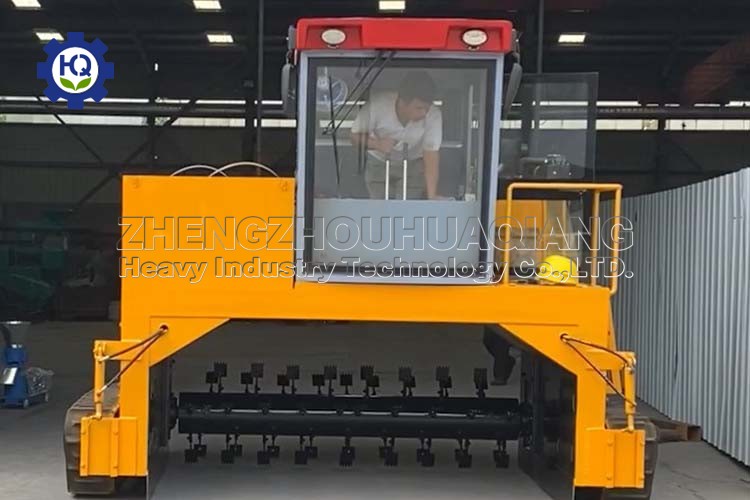Both self-propelled and towed organic fertilizer turners have their own advantages and differences in organic fertilizer fermentation operations.
In terms of power and mobility, the self-propelled organic fertilizer turner is equipped with its own power system, such as an engine or electric motor, which can walk independently and flexibly move and turn within the fermentation site according to operational needs, without the need for additional traction equipment. This makes it highly autonomous during the homework process and able to quickly reach the designated location for flipping. The tractor type organic fertilizer turning machine relies on external power sources, such as tractors, for traction and movement. It must be used in conjunction with traction equipment, which has relatively poor mobility, but in some farms or enterprises that already have traction equipment, it can reduce equipment purchase costs.
In terms of operational efficiency, the self-propelled flipping machine is capable of autonomous movement and does not need to frequently wait for the traction equipment to adjust its position during continuous operation. Its flipping speed is relatively fast, making it particularly suitable for large-scale, continuous fermentation operations. With the cooperation of traction equipment, although the movement speed of the traction type stacker may be slow, it can still achieve efficient operation for some regular shaped fermentation areas by planning the traction route reasonably.
In terms of equipment stability, the self-propelled stacker pays attention to its own balance and stability in design to ensure that there will be no shaking or tipping during the walking and flipping process. However, its own weight and center of gravity distribution may be subject to certain limitations. The traction type flipping machine, with the stability of the traction equipment, has good overall stability during the flipping process, especially when handling heavier materials or conducting deep flipping, it can better maintain balance.
In terms of maintenance, self-propelled turntables have relatively high maintenance costs due to the integration of power systems, including engine or motor maintenance, transmission component maintenance, etc. In addition to the maintenance of its own flipping components, the traction type stacker mainly relies on the normal operation of the traction equipment, and maintenance work is relatively concentrated on the traction equipment, resulting in relatively low self maintenance costs.
In terms of applicable scenarios, the self-propelled organic fertilizer turning machine is suitable for situations with large sites, dispersed work areas, and high requirements for work efficiency and autonomy. The traction type stacker is more suitable for use in conjunction with existing traction equipment, in production environments where the site is relatively orderly and the operation scale is relatively small.
There are significant differences between self-propelled and towed organic fertilizer turners in terms of power mobility, operational efficiency, stability, maintenance, and applicable scenarios. Producers need to consider various factors comprehensively based on the actual situation and choose the most suitable turning machine to improve the quality and efficiency of organic fertilizer production.